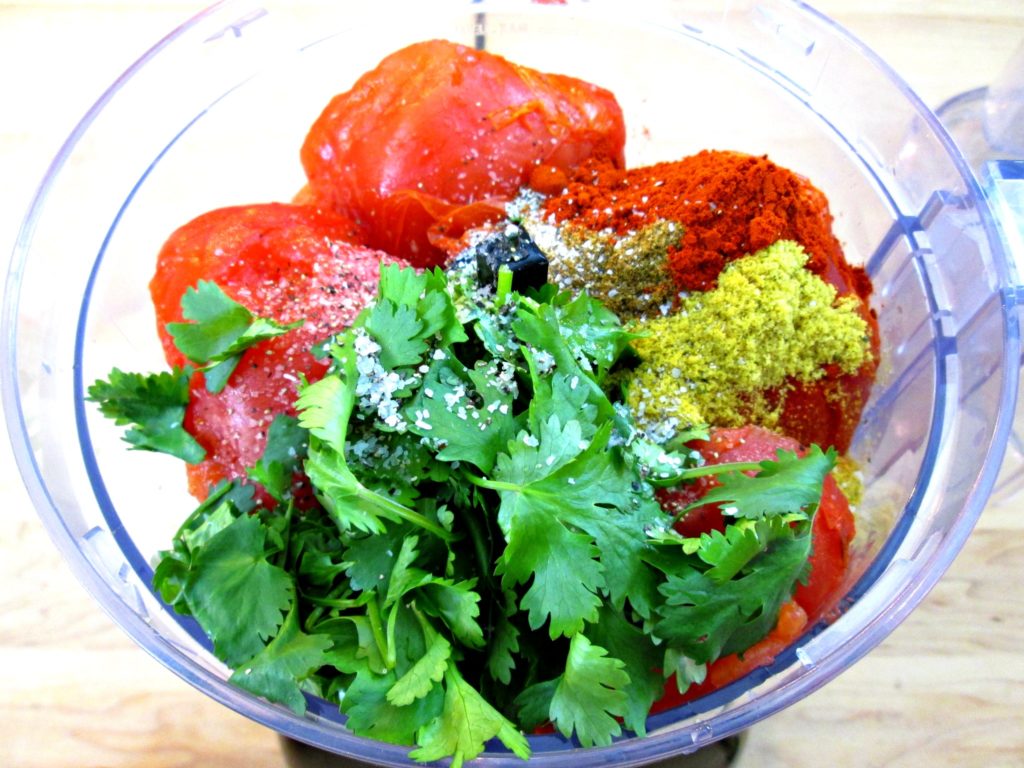Grilled, Broiled or Fire Roasted Salsa
I can honestly say that this Fire Roasted Salsa is amazing and it is, quite possibly, the best salsa I’ve ever tried. It starts with fresh Hot House Tomatoes, Yellow Onions, Green Bell, Anaheim and Jalapeno Peppers, cilantro, lime and a few other key ingredients. Although you can find recipes, similar to this one, all over the web, I seriously considered keeping this one all to my self. But I get too excited when I discover the secrets to authentic recipes. It makes me want to share it with everyone. So that’s what I’m going to do today.
Fire Roasted Salsa Preperation
To get the best results, and be sure that your Fire Roasted Salsa tastes amazing, there’s only one thing you need to do before you take the vegetables to the grill. Cut your onions in half. It isn’t going to matter if you peel them before or after they roast but it is important that those onion layers get exposed to the grill. Salsa gets a lot of great flavor from onions and they have memory, so adding that smoked flavor to the rings will insure that your salsa tastes amazing when you blend them, together, with the other ingredients.
Fire Roasted Salsa Grilling Technique
Whether you choose to grill, broil or roast your vegetables over an open pit, to make this Fire Roasted Salsa, the timing and flipping is simple. I average 25 to 30 minutes of roasting time, over medium heat(350 Fahrenheit), and I rotate and flip everything about every 5 minutes. Look for some good color on the under side and flip. It’s that easy. I tend to check the peppers first because they burn quicker than the tomatoes and onions. The onions I worry about the least. The tomatoes just need to be pulled off the grill before they pop and loose their juice to the grill. You should pay attention to where the hot spots are and rotate everything accordingly. Then remove them from the heat and let them rest for a half an hour or so, until they are cool enough to touch and handle with your hands. Remove the stems, peel the onions and add the other ingredients.
Fire Roasted Salsa Formula
I have a basic formula that you might find useful when you’re making Fire Roasted Salsa. For every large Tomato, I add 1 medium sized Onion, 1 Bell Pepper, 1 Anaheim Pepper, 1 Jalapeno and a few cloves of Garlic. It’s pointless making salsa on that small of a scale and that’s why I double that amount in the ingredients below. If you want it spicier, add more peppers, different kinds or use less tomato. It’s really not that difficult to trick up. But that should give you a better understanding of how to approach your own homemade salsa in the future.
How to Spice Up Fire Roasted Salsa
If the Peppers aren’t providing enough heat and flavor for your tastes, there are a few other ingredients you can add to your Fire Roasted Salsa and I’ve included them in this recipe. Cumin, Smoked Paprika and Mexican Oregano are definitely among my favorites. You can even add some Cayenne if you’re feeling froggy. Just be sure that you stay true to your tastes and be considerate of the pallets and less tolerant individuals, like children you may be serving, if they can’t handle spice.
Fire Roasted Salsa Ingredients:
2 Hot House Tomatoes, large
2 Onions,
1 Bell Pepper
1 Anaheim Pepper
1 Jalapeno
5 Garlic Cloves
1 lime, squeezed
1 bunch Cilantro
1 tbsp Oregano
1 tbsp Cumin
1 tbsp Smoked Paprika
1 tbsp Chicken Bouilion, Caldo con Sabor de Pollo(Knorr)
Salt and Pepper to taste












